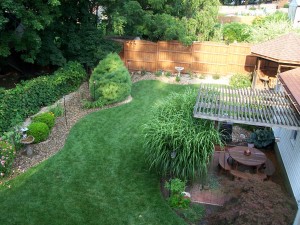Welcome Back!
I am so excited for spring!! As I have mentioned before, I love all of the seasons and Northeast Ohio is the perfect place to experience just the perfect amount of each one, before it becomes – too much of a good thing. This has been a typical Northeast Ohio winter and our plants have to be enjoying it – Some not as much as others.
Your lawn for instance, have you asked it how it is feeling lately? I asked my lawn this question the other day. The front lawn and the back lawn gave separate responses. The back lawn, which is Kentucky Bluegrass and installed from sod said “I’m a little tired for winter wear, a little rough on the edges and ready to stretch my blades, nothing a good raking and some warm weather won’t cure”.
The front lawn on the other hand was vociferous. The upper portion has been exquisitely aerated by the community squirrels and though fall leaves were raked and removed from this property time and time again, the tree lawn, or devil strip as I like to call it, is once again devoured in the vagabond leaves the wind has blown in. These leaves prevent air and sunlight from penetrating to the lawn below and therefore left unchecked can create areas in which overseeding is necessary. Mind you, these leaves are not a problem if they are finely mulched into the lawn in a timely fashion with an even distribution so as not to suffocate the lawn. My front lawn is a fine fescue mix, which ordinarily does not require as much effort as the backyards Kentucky Bluegrass – Environmental factors, the seed variety mix or lack of variety, style of original lawn establishment as well as continued lawn maintenance practices plays a significant role in the overall health of your lawn – “location, location, location”. My front lawn needs more care this time of year as it is exposed to harsher elements such as leaves, salt spray from the road, foot traffic when it is frozen, animal activity and full sun as the trees have no leaves. The front lawn is almost full shade in the summer and the backyard is full sun, therefore the backyard needs a lot more attention in the summer. The back lawn has no foot traffic in the winter, it does not gather leaves and does not attract much squirrel attention – did I mention it was Kentucky Blue grass from sod? In the summer it is a fertilizer & water hound!!!
My lawn is an example, what did your lawn have to say?
You will want to ask yourself these questions and take note:
- Do you know what variety of lawn you have?
- Do you know how your lawn was originally installed?
- What do you expect from your lawn?
- What does your lawn expect from you?
- Are organics and natural applications important to you and your lawn maintenance plan?
In the next month your lawn is going to rub the sleep from its eyes and you will want to know the answers to these questions. We are going to let you know when to get moving on it and what you should be doing.
This week do a walk through, check it out, and see what it has to say to you. Pick up any leaves and debris that may have gathered. Rake out any snow mold you may come across, (areas of the lawn that have died out and may look grayish or pinkish in cast), rake these areas out and remove the debris. Scuff up the soil and install a lawn seed mix that matches your existing lawn. Grab a bag of en-cap, made from recycled paper product with an addition of starter fertilizer, spread the en-cap across the area overseeded. You can repeat this process on any bare spots in your lawn.
Maybe I’ll see you in the seed aisle!




